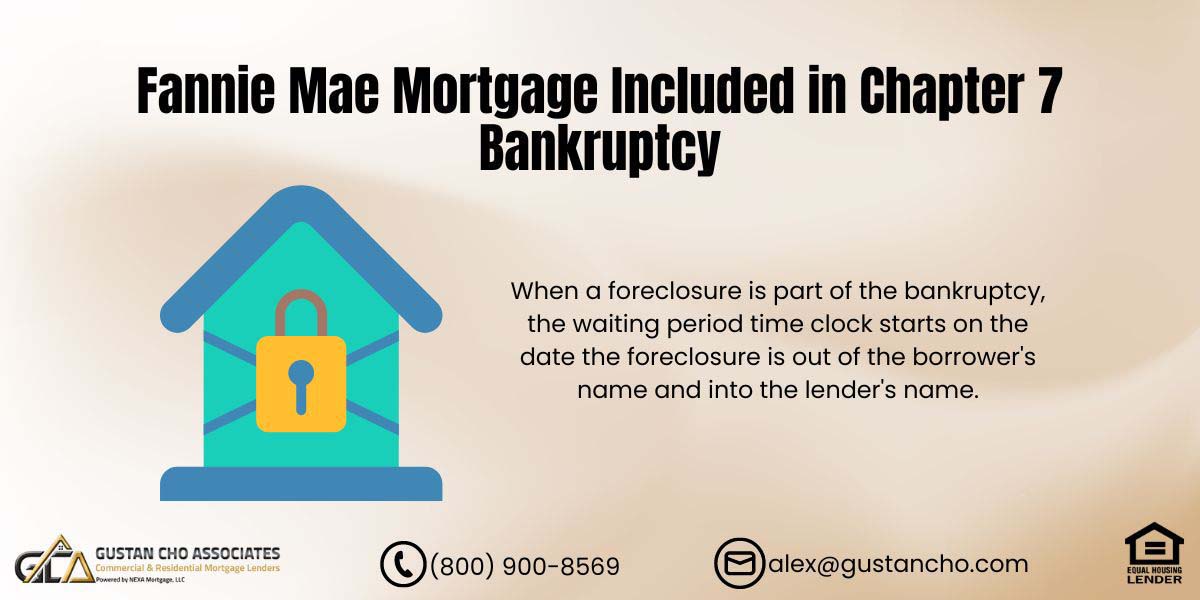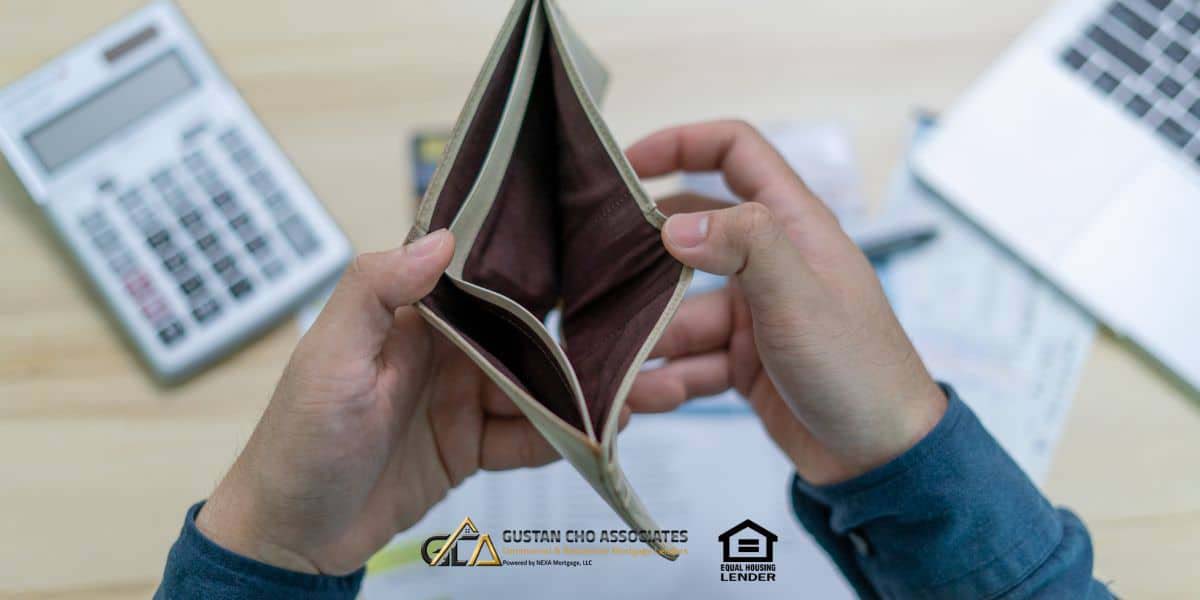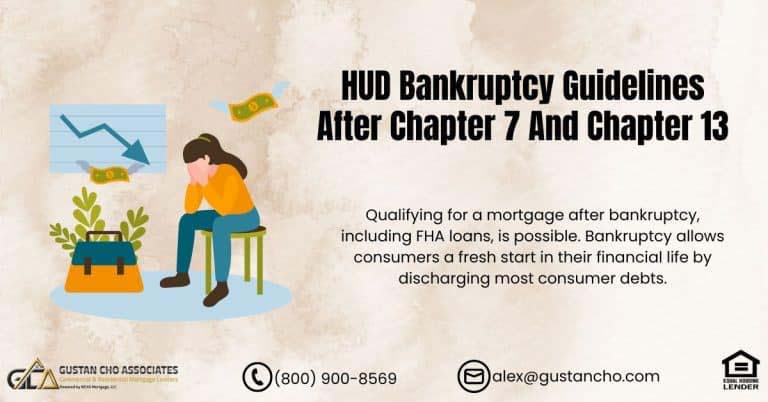In this article, we will cover and discuss getting approved for a new home loan after having a prior mortgage included in Chapter 7 Bankruptcy. There are instances where people will include a home loan when they file for bankruptcy. There are waiting period requirements after a bankruptcy and foreclosure. However, what is the waiting period if you have both a bankruptcy and foreclosure at the same time? In the following paragraphs, we will further discuss how to qualify for a home loan with a mortgage included in Chapter 7 Bankruptcy.
Is It Hard To Buy a House After Filing Bankruptcy?
There are many folks who can no longer afford their mortgage payments on their current home and file bankruptcy and have the foreclosure part of the bankruptcy. People that file bankruptcy and have their foreclosure part of bankruptcy will one day become homeowners. However, many folks who have the foreclosure part of bankruptcy are facing a major dilemma. The deed is still in their name and not the mortgage lender’s name. There are waiting period requirements after a bankruptcy and foreclosure in order for a person to be able to qualify for a residential mortgage loan.
Mortgage Waiting Period Guidelines After Bankruptcy And Foreclosure
The minimum waiting period for someone to qualify for a residential mortgage loan after a bankruptcy is two years from the discharge date of the bankruptcy. The minimum waiting period for someone to qualify for a residential mortgage loan after a foreclosure is three years. The waiting period start date is from the date the foreclosure is transferred out of the borrower’s name and into the mortgage lender’s name. When a foreclosure is part of the bankruptcy, the waiting period time clock starts on the date the foreclosure is out of the borrower’s name and into the lender’s name.
Had a Fannie Mae Mortgage in Chapter 7 Bankruptcy? You Can Qualify for a New Loan!
Contact us today to learn about the requirements and how we can help you get back on track.
Waiting Period Start Date For Home Loan With Prior Mortgage Included in Bankruptcy?
Just because the foreclosure is part of the bankruptcy does not transfer the deed out of the borrower’s name into the mortgage lender. The foreclosure part of bankruptcy will wipe out the mortgage. But the deed is still in their name. As soon as bankruptcy is finalized, consumers need to make sure that the bank has transferred the title to their name and out of homeowners. I have so many folks who had their foreclosure part of bankruptcy many years ago but the deed is still in their name. So their waiting period has not even started yet. These folks still need to wait three years from the date the deed is transferred out of their name.
Fannie Mae Guidelines on Mortgage Included in Chapter 7 Bankruptcy
When a borrower files for Chapter 7 bankruptcy, it can affect their existing Fannie Mae mortgage. Here are some key points about how a Fannie Mae mortgage is handled in a Chapter 7 bankruptcy: Automatic Stay: As soon as the bankruptcy is filed, an automatic stay goes into effect, prohibiting creditors, including mortgage lenders, from taking any collection actions against the borrower.
Reaffirmation or Redemption
The borrower can either reaffirm the mortgage debt or redeem the property. Reaffirmation means the borrower agrees to continue making mortgage payments per the original terms. Redemption allows the borrower to pay the mortgage balance in a lump sum.
Discharge of Personal Liability
In a Chapter 7 bankruptcy, the borrower’s liability for the mortgage debt can be discharged. However, the lender’s lien on the property remains valid. Fannie Mae Guidelines: Fannie Mae has specific guidelines for dealing with mortgages, which are included in a Chapter 7 bankruptcy. Fannie Mae guidelines may vary depending on whether the bankruptcy was filed before or after the mortgage originated and the borrower’s intentions regarding the property.
Foreclosure Possibility
If the borrower does not reaffirm or redeem the mortgage, the lender may proceed with foreclosure proceedings after closing the bankruptcy case. However, Fannie Mae’s guidelines aim to avoid foreclosure if possible.
Loan Modification or Reinstatement
In some cases, Fannie Mae may allow for a loan modification or reinstatement of the mortgage after the bankruptcy is discharged, provided the borrower meets certain eligibility criteria.
Credit Impact
A Chapter 7 bankruptcy will significantly negatively impact the borrower’s credit score, which may make it more difficult to obtain new credit or refinance the mortgage in the future. Borrowers must understand their options and the potential consequences of including a Fannie Mae mortgage in a Chapter 7 bankruptcy. Consulting with a bankruptcy attorney and communicating with the lender can help you navigate the process and explore possible solutions.
What If Lender Does Not Change Deed After Foreclosure To Their Name?
Many of these folks have made countless phone calls to their lenders. Their lenders are not cooperating and are in no hurry in getting the deed into their name. Technically, homeowners own the home free and clear if the mortgage was included in bankruptcy. This holds true because the bankruptcy wiped out the mortgage loan balance. However, if the lender finds out that the homeowner on the deed is selling their home, the lender will react. The title is technically in the homeowners name and there is no mortgage. The mortgage has been discharged in the bankruptcy.
Quick Fix of Getting Name Out of Deed
As mentioned earlier, if a homeowner has a foreclosure included in the bankruptcy and is still on the title, the mortgage is wiped out. The homeowners no longer owe the mortgage lender a loan balance. Lenders should be in a hurry to get the title transferred in their name. However, most are not. They often do not care about transferring the deed out of the homeowner’s name. Mortgage lenders know delaying transferring the deed out of the lender’s name will be hurting homeowners. Those who have made countless unreturned phone calls making this request with the lender not cooperating should try selling the home.
Chapter 7 Bankruptcy? You Can Still Get Approved for a Fannie Mae Mortgage!
Reach out now to find out how we can assist you in securing a new loan.
When Can I Qualify For a Mortgage After Including The Mortgage in a Bankruptcy?
I suggest that you write a certified letter to the lender stating if they do not transfer the title into their name that the property will be listed and sold. Technically homeowners can keep all the proceeds from the sale. This certified letter will alert the lender that you can legally do that and you will most likely see some action. I have never seen a case where a homeowner does this where they kept all of the proceeds from the sale. But I have seen many lenders act fast in transferring the borrower’s name off the title and into theirs and recording it.
Update on Mortgage Included in Chapter 7 Bankruptcy
Those who had a Mortgage Included In Chapter 7 Bankruptcy, may now qualify for a conventional loan four years from the date of your discharge date of Chapter 7 Bankruptcy. The housing event needs to have been finalized. Foreclosure, deed in lieu of foreclosure, or short sale can be recorded at a later date past the discharged date of the Chapter 7 Bankruptcy discharged date.
The waiting period to qualify for a mortgage with a prior Mortgage Included In Chapter 7 Bankruptcy applies only for conventional and VA loans. This does not apply to FHA and USDA Loans. Mortgage Included In Chapter 7 Bankruptcy on government loans, the waiting period starts from the recorded date of the foreclosure, deed in lieu of foreclosure, or short sale date.
Best Mortgage Lenders With No Overlays on Conventional Loans
Homebuyers who had Mortgage Included In Chapter 7 Bankruptcy and have passed the four-year waiting period and need to qualify for conventional loans with a national mortgage company licensed in multiple states with no lender overlays on government and conventional loans, please contact us at Gustan Cho Associates at 800-900-8569 or text us for a faster response. Or email us at gcho@gustancho.com. The team at Gustan Cho Associates is available 7 days a week, on evenings, weekends, and holidays.
FAQs: Fannie Mae Mortgage Included in Chapter 7 Bankruptcy
- 1. What happens when a mortgage is included in Chapter 7 Bankruptcy? Your mortgage will be discharged when a bankruptcy includes it under Chapter 7. Nonetheless, the mortgage remains in your name until your creditor transfers the title.
- 2. Can you buy a house after filing for Chapter 7 bankruptcy? Getting another house always hard after going through Chapter 7 insolvency. There are some waiting period requirements that have to be fulfilled for you to get another loan.
- 3. How long do I have to wait before I can apply for another home loan if I have filed for Bankruptcy or Foreclosure? After discharge from bankruptcy, two years should elapse while three years after foreclosure are done with your name.
- 4. When does the waiting period start if my bankruptcy has the mortgage included in it? The waiting period begins not when you are discharged from bankruptcy but when ownership of the foreclosure is transferred from you to your creditor.
- 5. What if my lender did not put the deed out of me? Please ensure they transfer control of your document. Because it is still under one’s name, that means there has been no counting till now as such any rest time is concerned. Sometimes it takes so much time before these types of titles change hands like these; therefore further steps may be necessary to speed up their occurrence.
- 6. How do I make sure my deed transfer goes quickly? To expedite titling process, send a certified letter saying that unless they take it over and list this as an asset, you will sell this particular item. This often forces lenders into action without delay.
- 7. What are Fannie Mae’s guidelines on mortgages being included in Chapter 7 bankruptcies? According to Fannie Mae guidelines, once an automatic stay enters into effect, creditors must stop pursuing claims against borrowers who had filed Chapter 7 bankruptcy which means they would either keep making payments or pay off their loans sooner than scheduled. Even if certain lenders’ liens were not redeemed or reaffirmed and can be foreclosed after the bankruptcy, your personal responsibility is gone. If you meet the criteria, loan modifications or reinstatements may be possible. Filing for bankruptcy will greatly affect your credit score.
- 8. Can I get a conventional loan if my mortgage was included in Chapter 7 Bankruptcy? Yes, four years after receiving a discharge from chapter seven insolvency and once the foreclosure or any other house-related event is settled.
- 9. Do different types of loans carry different waiting periods after including a mortgage in bankruptcy? The FHA and VA loans share similar waiting periods which in this case last for four years. The FHA and USDA has varying waiting time limits that start counting from the date of recordation of foreclosure or like actions.
- 10. Where to find no overlay conventional lender for home buying mortgages after Chapter 7 Bankruptcy? You can reach Gustan Cho Associates at 800-900-8569. They are open Monday-Sunday and offer conventional as well as government loans with no overlays.
This blog about Fannie Mae Mortgage Included in Chapter 7 Bankruptcy was updated on July 3rd, 2024.
Looking to Buy a Home After Chapter 7 Bankruptcy? Fannie Mae Can Help!
Contact us today to explore your options and get started on your homeownership journey.










